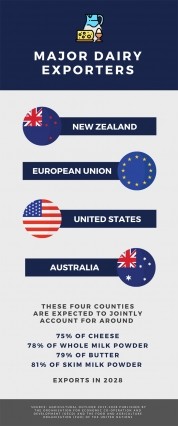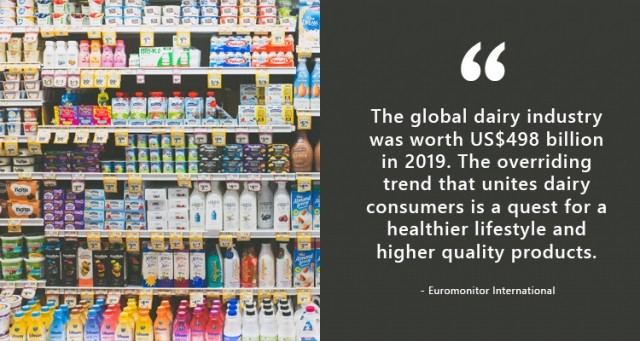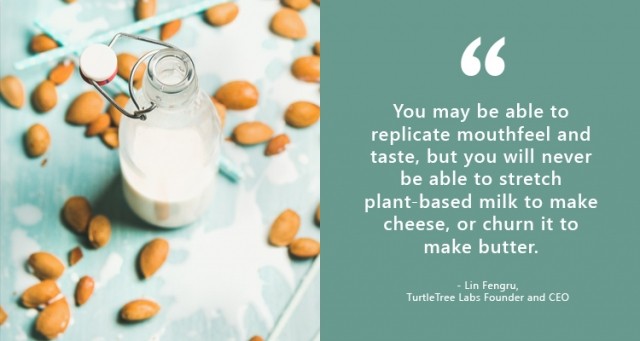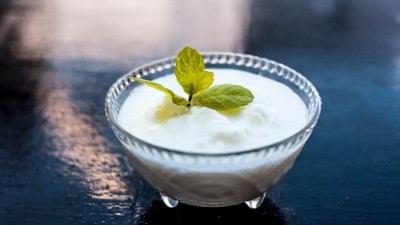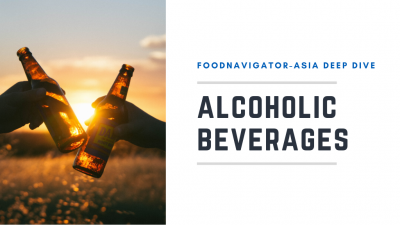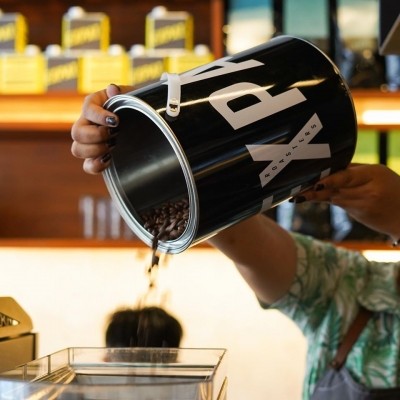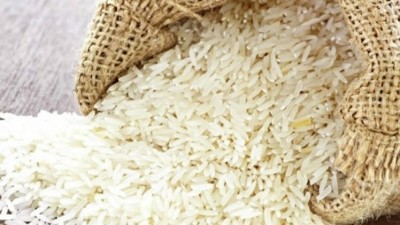FNA Deep Dive 1: Dairy
Milk vs climate change: How can dairy compete against its ‘sustainable’ competitors?
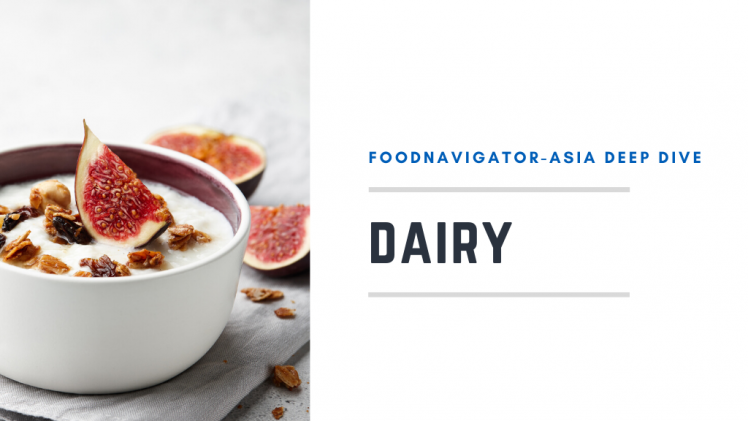
This is why we have selected dairy as the main theme for the first edition of our brand new industry-focused spotlight, the FNA Deep Dive series.
Based on current numbers and predictions, dairy remains in a very strong position and this trend is expected to continue for at least the near future, especially in the Asia Pacific region: GlobalData expects the APAC dairy industry to grow by a CAGR of 4.96% to hit US$80.2bn by 2023, from US$62.9bn in 2018.
In 2019, this number stood at some US$65.9bn – accounting for over 13% of the US$498bn global dairy industry value as per Euromonitor data, fuelled by factors such as increasing per-capita income, population growth, and high consumption in India and China.
According to New Zealand’s largest dairy co-op Fonterra, the industry’s growth is also being driven by trends such as increasing consumer awareness for healthier options, as well as provenance and sustainability.
“A lot of the trends across different markets (in the Asia Pacific region) are the same, but at different stages of evolution,” Fonterra Asia Pacific CEO Judith Swales told FoodNavigator-Asia.
“[For example], consumers are becoming more conscious about having healthy nutrition [via] more nutritious-dense food, [which dairy can provide].
“We also think that [sustainability aspects such as] reducing coal use, reducing waste produced, and focusing on sustainable packaging will be increasingly important for consumers, and are going to impact on the brands they choose to purchase.”
Watch the video below to find out more:
The alternative view
Despite these optimistic numbers and views, critics of the dairy industry are numerous.
For example, there is the global rise in the popularity of veganism.
Meanwhile, in terms of sustainability, critics tend to believe that dairy consumption is bad for the environment and encourages animal cruelty.
Whereas in terms of health and wellness, it is believed that milk is contaminated with hormones and antibiotics, that pasteurisation destroys good nutrients in it, that consuming milk by another animal is ‘unnatural’.
This has led to the rise of many plant-based alternatives over the years, including ‘milk’ made from almonds, oats, soy, peas, coconuts, rice, quinoa, hemp and many more.
According to Transparency Market Research, the plant-based milks industry is currently worth around US$14bn and is expected to grow 8% to pass US$30bn by 2029.
In terms of nutrition, most of these plant-based alternatives generally claim to boast one benefit or another, e.g. soy has as much protein as cow’s milk, or oats are high in fibre – but as of yet, no one single alternative has hit the spotlight as being completely nutritionally equivalent to dairy, and it seems most dairy product manufacturers are not worrying too much…yet.
“[Despite what the plant-based sector says], dairy is still one of the best sources of protein,” New Zealand-based dairy specialist firm Lewis Road Creamery General Manager Nicola O’Rourke told FoodNavigator-Asia.
“It provides high quality fats and proteins which are very important for health, especially for growth in the younger generation.”
Calcium and Vitamin D are also nutrients of concern here, found in high amounts in milk and of significant importance to bone health and growth – In a previous study published in The American Journal of Clinical Nutrition, children who avoided drinking cow milk due to lactose intolerance or by choice were found to have low dietary calcium intakes and poor bone health.
As such, in general experts do not recommend cutting out dairy entirely unless the consumer has health-related issues such as lactose intolerance or allergies.
As far as milk safety goes, particularly to avoid contamination with any undesirable materials, the most direct solution would be to ensure the use of ‘high quality’ milk, where the animals from which the milk is produced are well-taken care of.
“[We see] continued growth in several dairy sectors [such as] ice-cream and yoghurt as well, which proves there is still consumer demand for dairy via different sources and formats,” said O’Rourke.
As for pasteurisation, the argument can really go both ways – whether or not good nutrients are destroyed by the process, official sources such as the New Zealand government have previously described unpasteurised milk consumption as ‘risky’, not least because ‘illness-causing bacteria including E. coli, listeria and Campylobacter’ were not removed.
Technology is also stepping in to potentially solve this problem: dairy company Made By Cow’s CEO Wade Porter previously told us that its new cold high-pressure processing (HPP) pasteurisation technology which ‘knocks out’ pathogens in the milk, but still maintains the viability of smaller molecules such as vitamins and enzymes.
Environmental woes
Another very major challenge facing the dairy industry is that of sustainability – one that looks to be very hard to set aside, as the research-based evidence against it has proved to be substantial in recent times.
A recent Oxford University study incorporating data from over 119 countries showed that meat and dairy provide 18% of calories and 37% of protein for our consumption overall – but uses some 83% of global farmland and produces 60% of greenhouse gas from an agricultural source.
“Even the least sustainable soymilk is still better for the planet than the most sustainable cow’s milk,” said study lead author Joseph Poore in a video by non-profit organisation Million Dollar Vegan.
“[A] low-impact litre of cow’s milk uses almost two times as much land and creates almost double the emissions as an average litre of soymilk.”
“A vegan diet is probably the single biggest way to reduce your impact on planet Earth, not just greenhouse gases (GHGs), but global acidification, eutrophication, land use and water use.”
The implied advice here when it comes to dairy is to go for plant-based alternatives, which are claimed to significantly lower the environmental impacts especially due to a lower carbon footprint. For example, oat milk production could release up to 41% less greenhouse gases as compared to cow’s milk production.
But there are other concerns which are far less discussed when it comes to this topic: A 2016 UCLA paper found that the production of almond milk requires roughly 17 times more water per litre than cow’s milk, whereas a separate Agricultural Systems study showed that oat milk production could cause up to 37% higher environmental acidification.
Although it would doubtlessly be impossible to decide which of these environmental concerns (GHG emission, water usage, acidification) are more troubling or important than the other, it may not be wise to ignore any of these in favour of another without proper handling in place.
Making milk instead
One of the newest kids on the block of this industry is cell-based milk, produced entirely in the lab using stem cells to create mammary glands that can lactate – and a potential solution to the environmental concerns highlighted above.
“We are creating real cow’s milk which eventually can turn into other dairy products like butter and cheese, [which] are hard to replicate from plant-based methods,” technology patent holder TurtleTree Labs’ Founder and CEO Lin Fengru told FoodNavigator-Asia.
“There are many things you can do with these stem cells such as increasing cream or fat content, decreasing cholesterol or lactose.”
The technology is said to be 98% more carbon efficient than regular milk production practices – making a world of difference and definitely highly likely to appeal to consumers whose main concerns are sustainability-linked.
Lin was also of the opinion that it will be difficult for plant-based milks to really replace real cow’s milk, as ‘it may be able to replicate mouthfeel, taste of milk, but never to stretch it to make [real] cheese, or churn to make [real] butter.”
Price
All things considered, one of the most important factors when it comes to influencing Asia Pacific consumer choices will always be price.
Although fresh (cow’s) milk is somewhat more expensive in Asian countries like Singapore at around S$3.20 (US$2.37) per litre of fresh milk (Marigold HL brand, as retailed in NTUC FairPrice) as compared to Oceanic countries like Australia at A$1.29 (US$0.89) per litre (Coles house brand), there is no doubt that most plant-based alternatives are still pricier.
The cheapest variety of almond milk found on the NTUC FairPrice website was by local Singaporean brand UFC, but still cost S$4.95 (US$3.67) – about 54% more expensive than the fresh milk.
Soy and coconut milks were relatively cheaper, but each carry relative health concerns as well – too much soy milk is believed to increase the risk of hormonal imbalance for women as it is high in oestrogen, whereas coconut milk is relatively high in fats.
Even in Australia where there are many plant-based milk brands available, almond milk was found to be quite a bit more expensive. The cheapest variant found on the Coles Online website was by its house brand at A$2.00 (US$1.37) – and this was still some 55% more expensive than the cheapest fresh milk.
Asia Pacific consumers are known to be very price-sensitive, and with such a wide pricing gap staring them in the face, it is unlikely that the tide will turn as a whole until more economical options are made available.
As such, as it stands, based on current available alternatives and new emerging technology, even if the trend of veganism and thus preference for plant-based milks rises significantly in the APAC region, as it has in places like the United States and United Kingdom, it seems highly unlikely that traditional dairy will be largely, much less completely, replaced by plant-based alternatives just yet.

